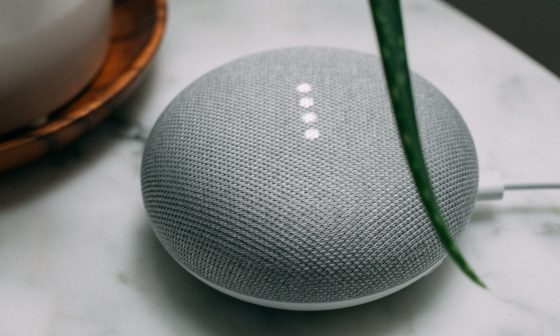The metaverse is starting to impact businesses. And its current influence is just the tip of the iceberg. Consumers are already getting used to the comfort, accessibility, and ease of the metaverse. For the modern consumer, their phone is a portal to an easily navigable world. They can try on clothes, experiment with makeup looks, or explore a new neighborhood, all with the help of their phone’s viewfinder. Now, augmented reality shopping experiences are on the horizon – and it’s time for businesses to adapt.
Augmented reality experiences will take online shopping to the next level for consumers. It’s no surprise that the technology is being quickly adopted by pioneers of the metaverse. Let’s take a look at how this trend began – and how it will impact consumers and businesses for years to come.
Shopping has become digitized
Customers love comfort and ease. It’s no wonder that online shopping is up 31.8% since 2020 and shows no signs of slowing down. Now, e-commerce is worth over $1 trillion dollars a year in the US. Despite the large portion of shoppers who still prefer in-store experiences, many turn to online shopping for convenience, increased selection, or better deals.

The pandemic accelerated the pace of digitalization. Until recently, companies were still dealing with the aftermath of COVID’s supply chain crisis, making it hard to fulfill the surging demand for items purchased online. As supply chains mellow out and just-in-time deliveries get back on track, consumers are more committed to e-commerce than ever before.
Shopping online offers consumers:
- A wider range of products
- Better opportunities to hunt for deals and price compare
- Hours of saved time (and gas money)
As consumers have accelerated the digital revolution, companies and brands have innovated around the best way to sell their products.
Shopping online used to be somewhat of a crap-shoot – with weeks-long shipping times and varying levels of quality. But now, an influx of trustworthy companies with iron-clad social proof has made online shopping as secure as the in-person buyer experience.
For clothing, brands give accurate garment measurements while previous buyers provide pictures and descriptive reviews. And in the case of more trendy, viral items, hundreds of consumers film reviews for their social media accounts.
For many shoppers, giving an opinion on an item provides a small dose of both celebrity and altruism. For brands, the consumer obsession with recommending items and providing feedback is key for marketing strategies and social proof. With online platforms flooded with banner ads and sponsored posts, brands who innovate to cater to the digital revolution find the most traction online.
Brands are already implementing augmented reality shopping experiences
While augmented reality is still in its infancy, savvy brands are leading the way on the new era of digital consumerism. Here’s a look into what brands are doing:
Walmart acquired a virtual fitting room – so consumers can try on and share looks
Walmart recently acquired Zeekit, a virtual fitting room app. This is definitely the first step towards more advanced try-on experiences! Walmart customers can forego the fitting room, and find what suits them best.

Consumers have used Warby Parker’s virtual try-on app since 2019
With more customers ordering their glasses online, Warby Parker was one of the pioneers of the augmented reality shopping movement.
After years of offering free at-home try-ons, expanding to augmented reality was the logical next step. The Warby Parker app enables users to virtually try on frames. And customers love it – much easier than going all the way to the store!
Rugs.com uses a “see this in my room” feature
Redecorating can be stressful. Especially when consumers are opting to order items online! Uncertainty over whether things will look just right causes friction in the buyer journey.
Luckily, stores like Wayfair and Rugs.com use augmented reality to show customers what pieces will look like in their space. No guesswork required!

Sephora launched a virtual makeover app
Sephora’s Virtual Artist isn’t a far cry from the makeup filters seen on platforms like Snapchat, Instagram, and TikTok. Virtual Artist scans users’ faces and lets them try on makeup virtually. This is great for color matching and trying out the newest makeup trends.
Do consumers actually want these changes?
As Meta announces their newest gadget, a $1500 headset called the Meta Quest Pro, skeptics might wonder who would shell out over a grand for emerging tech. But really, it’s not a far cry from the price of an iPhone. If you think of metaverse gear as the next computer, the next gaming setup, or the next phone, it’s much more reasonable.
After all, there’s been an increase in people buying luxury gadgets for their homes. This rose sharply during the pandemic – and the trend is continuing. Stuck inside, many realized that they would rather have home gyms than a gym membership; some bought in-home saunas; others upgraded their kitchen gadgets to make café-grade coffee at home. No matter the upgrade, it’s clear that people are investing more in themselves and their homes.

Luxury goods like these save people time and money. But will VR headsets prove the same?
Customers will love the convenience of augmented reality shopping experiences
Consumers love convenience over everything. From groceries at your door to free 2-day shipping, customers are used to instant gratification with little to no effort on their part. And that’s not to disparage anyone – who wouldn’t love an easier method of getting their errands done? In a busy and stressful world, reducing the time it takes to get what you want or need is universally appreciated.
But what about the over 50% of adults who prefer shopping in stores? Augmented reality shopping offers a chance for consumers to have a nice shopping experience without the time-suck. It’s the best of both worlds. Online shopping devotees relish the process of trying everything on – but hate doing returns when things don’t work out. Brick-and-mortar shopping fans love to browse and try on in person, but limited store hours and faraway locations can impede the shopping experience.
With augmented reality shopping, customers can try on clothes from their homes before they buy. This gives users an in-person experience from their own homes. They can ensure that pieces fit and suit their tastes without the hassle of commuting to the store or having to make returns.
Augmented reality is great for stores, too
It’s great that consumers will have a better and more streamlined experience. But how will shifting to an augmented reality model impact businesses?
If you own a brand with a brick-and-mortar store, the impending changes might be stressful. Adapting to an augmented reality model will happen as VR and augmented reality becomes more popularized. Consumers will expect to be able to find items on their headsets – much like they might expect to find a business or brand online. Thinking about it like that, of course businesses need to follow suit as the trend intensifies. Imagine a business today not having a website – or even a Facebook page! That would be unthinkable. Soon, the same will be true for virtual reality storefronts.
Having an augmented reality business will likely mean:
- Lower overhead
- Stores won’t need to hold as much inventory
- Loyal customers
- If customers can shop your business on their headset, they’re more likely to return
- More promotion
- If your business is on a new platform, it’s obvious that you would also employ more promotional tactics. This means you’ll have more eyes on your brand!

AR shopping will soon replace brick-and-mortar stores
While the technology itself may take a few years to completely catch on, the concept is strong. After all, 35% of people say that they would be shopping online more if they could virtually try on a product before buying it.
Augmented reality shopping is the best of both worlds for many consumers, providing a great experience with the ease of online shopping.
If we had to guess, luxury shopping brands will be the first to dive into the virtual reality shopping world. Since designer brands are known for their in-store experiences, many first-time buyers like to go in person to get the full experience. Providing an augmented reality shopping experience will open these stores up to potential buyers who may not live close enough to a brick-and-mortar store – or who otherwise may just prefer staying home.
22% of people would be less likely to visit a brick-and-mortar store if AR was available via their favorite ecommerce store. And as augmented and mixed reality become more integrated and mainstream, we predict that this number will only go up.


